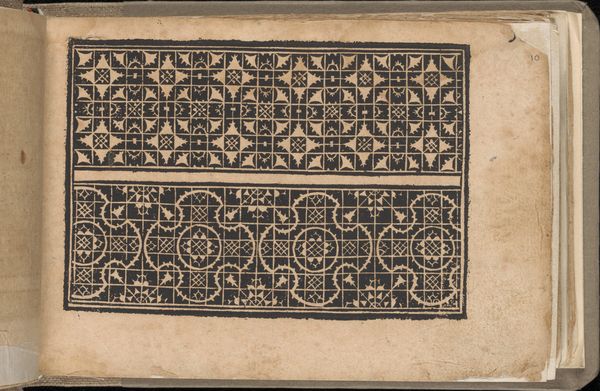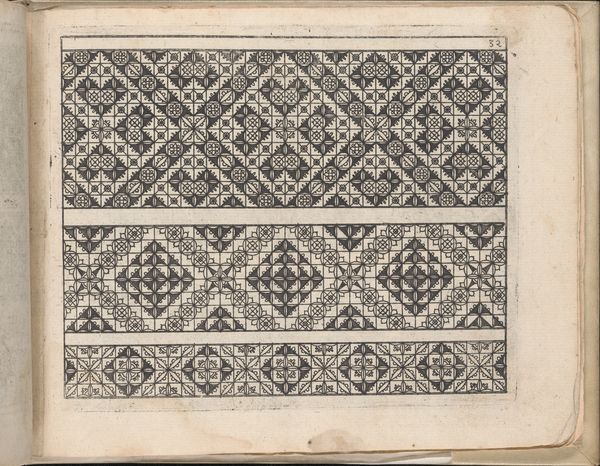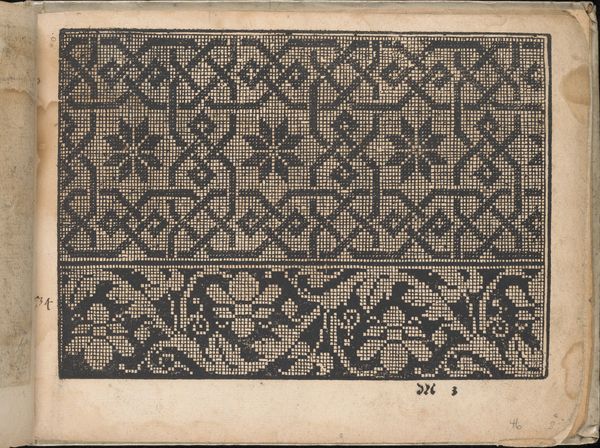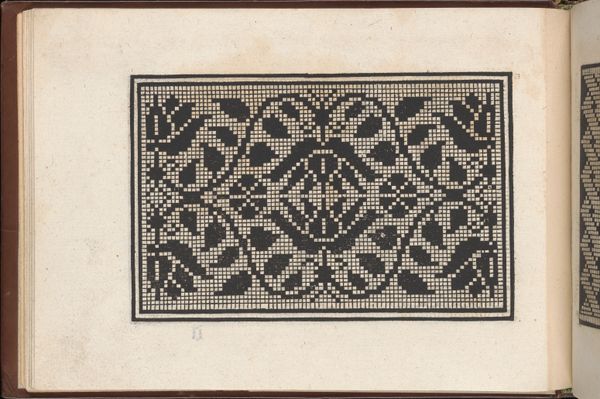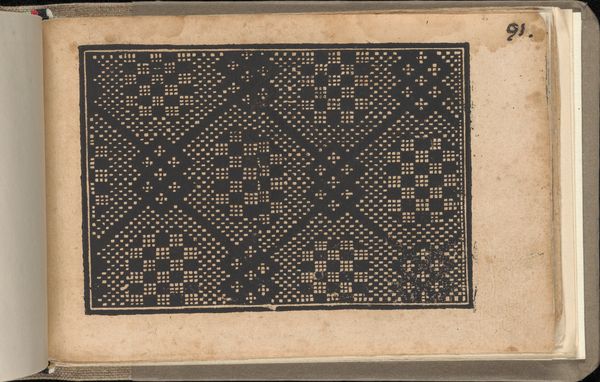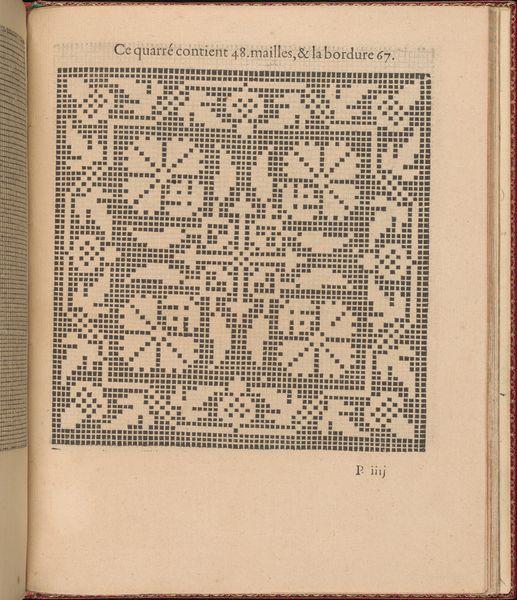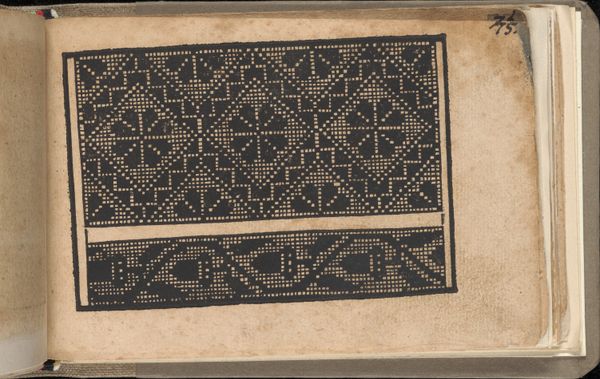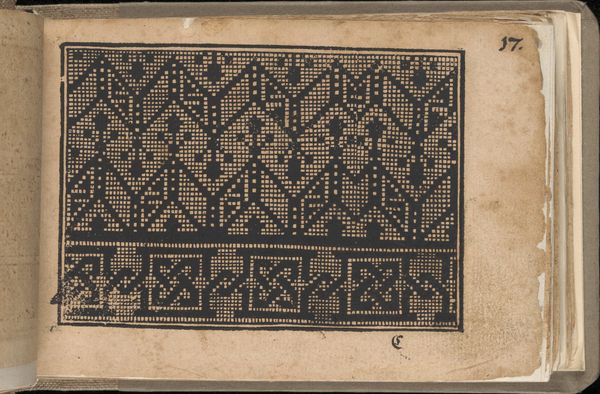
Page from Eyn Newe kunstlich moetdelboech alle kunst (Page 13r) 1532
0:00
0:00
drawing, graphic-art, print, woodcut
#
drawing
#
graphic-art
#
medieval
# print
#
geometric
#
woodcut
#
geometric-abstraction
#
line
Dimensions: Overall: 5 11/16 x 8 1/16 in. (14.5 x 20.5 cm)
Copyright: Public Domain
This page, from Peter Quentel’s model book, was printed in Cologne in the first half of the 16th century. It’s a woodcut, meaning the design was carved in relief on a block of wood, then inked and pressed onto paper. Look closely, and you can see the characteristic crispness of the lines, and the way the image is built up from many small cuts. This particular pattern is for needlework; designs like this would have been used as guides by embroiderers. It belongs to a time when printed images made design accessible on a mass scale. Before the advent of print, such patterns were painstakingly transmitted by hand – a much slower process. The model book is therefore indicative of a shift in the social status of design, and the rise of a more widely available visual culture. It is also a testament to the skill of the block cutter, an artisan who was essential to the early modern print industry. It is a reminder that even seemingly simple images have complex histories of labor and production behind them.
Comments
No comments
Be the first to comment and join the conversation on the ultimate creative platform.

